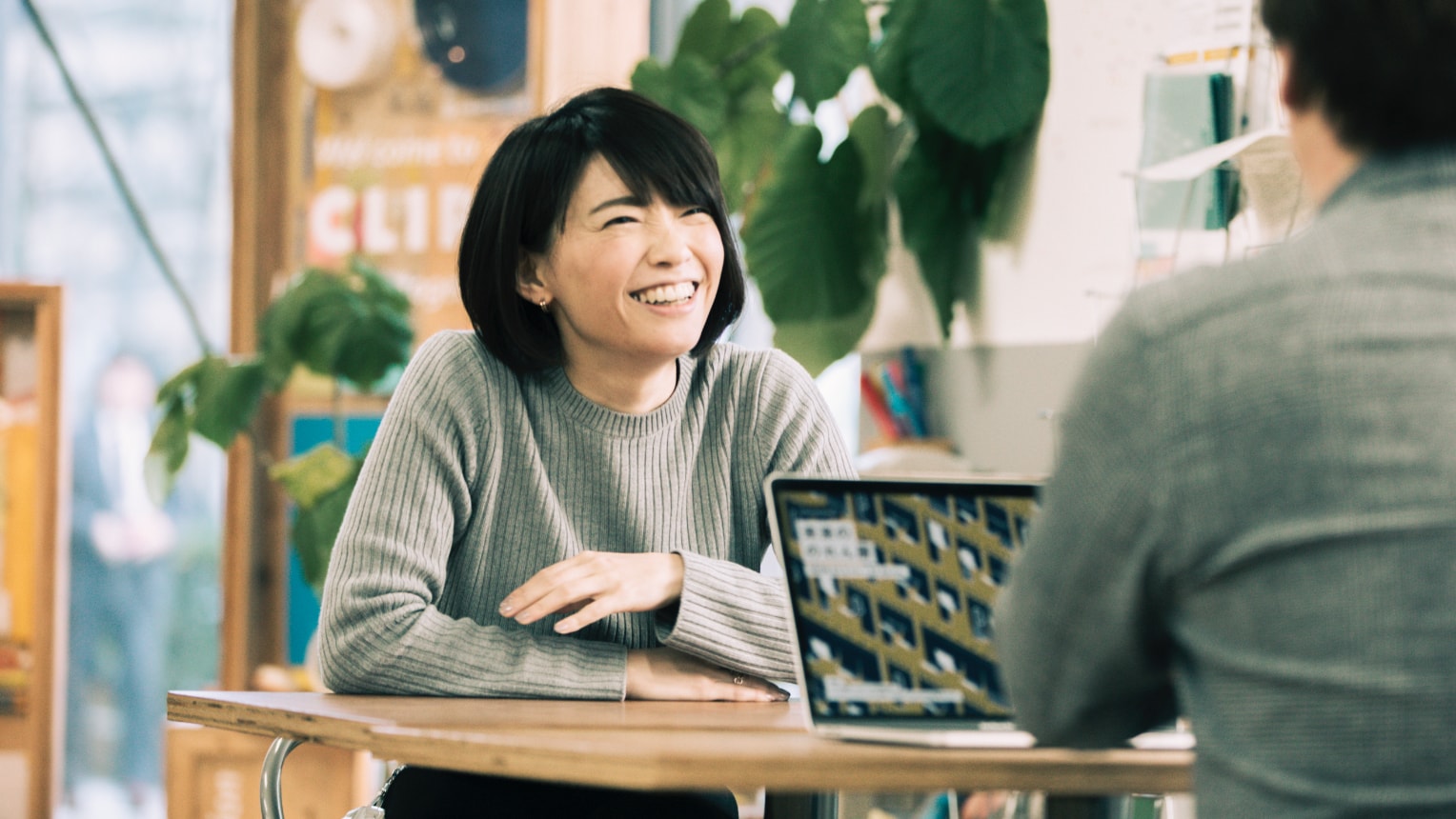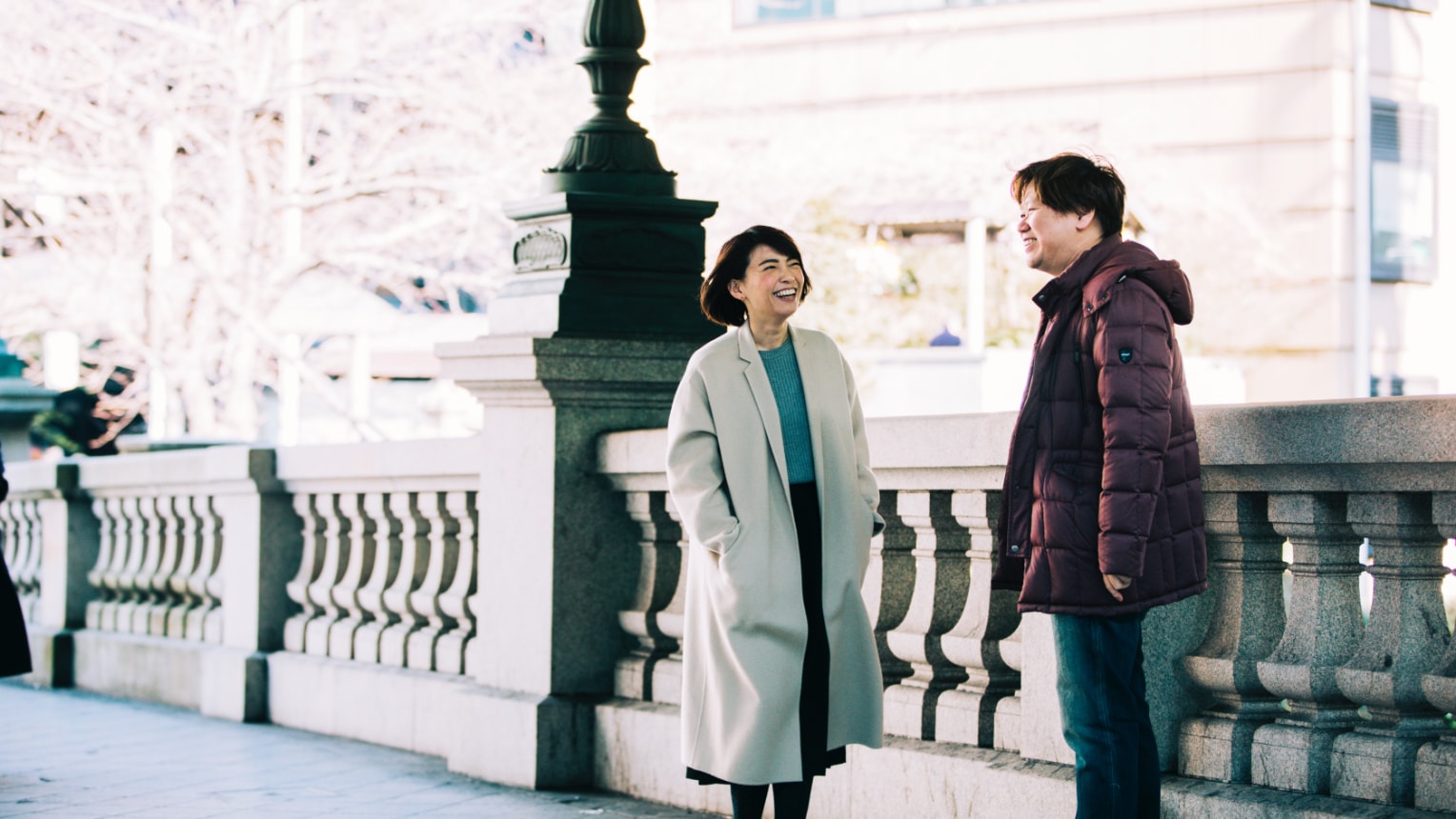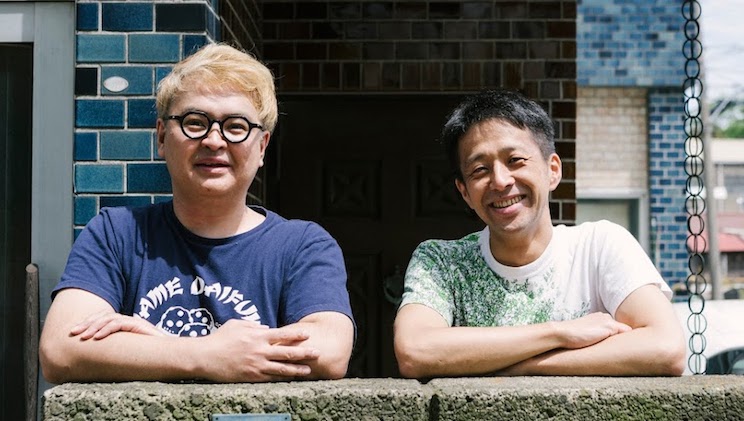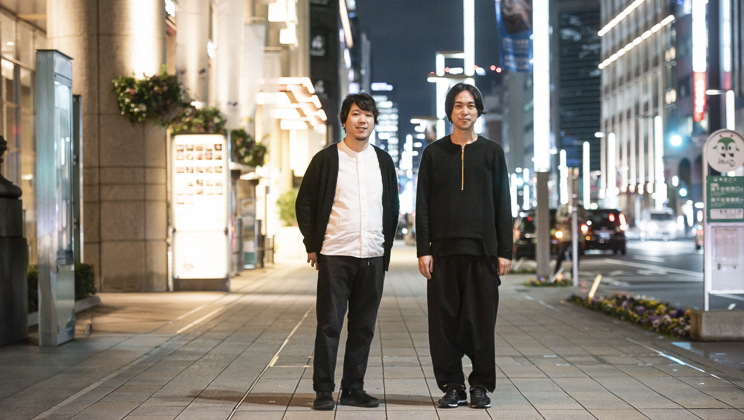A Strong Focus creates Potential for Fun. “Collaboration Magazine Bridgine” starts to entice collaboration in the town of Nihonbashi
A Strong Focus creates Potential for Fun. “Collaboration Magazine Bridgine” starts to entice collaboration in the town of Nihonbashi

“nihonbashi β” started as a joint project to create the future of Nihonbashi by connecting young creators with this town. As the first step of this project, the “Mirai-no-Noren (Shop Curtains) Exhibition” was held in 2018, where young creators held a workshop to create “Mirai-no-Noren (Noren of Tomorrow)” with entirely new experiences, based on the “Noren” of famous stores in Nihonbashi. Through this, the town of Nihonbashi became decorated with newly inspired “Noren”. This attempt to redesign “Noren”, a symbol of long-standing stores, through a collaboration with young creators was highlighted by various media outlets, including on television.
“nihonbashi β” continues to be active in 2019. They have recently launched “Collaboration Magazine Bridgine (hereinafter, Bridgine)”, Web-based media to promote the challenges and collaborations taking place in the Nihonbashi area. Focusing on creators and long-standing stores that are still active in Nihonbashi, Bridgine continues to promote the stories of people who challenge history and map out their own future. In addition to continuing last year’s “Mirai-no-Noren Exhibition,” they are currently planning new programs to connect creators with Nihonbashi. We interviewed Masayoshi Boku, representative of the nihonbashi β project and Bascule Inc., as well as Aya Sakamoto, producer of the nihonbashi β project and affiliated with Mitsui Fudosan Co., Ltd., which is redeveloping the Nihonbashi area. Together, we will look back on the accomplishments that Boku-san and Sakamoto-san achieved through “nihonbashi β” and what they want to share through “Bridgine”, as well as future possibilities for Nihonbashi.
A great past will map out the future! A town that welcomes challengers
-First of all, through your work in operating “nihonbashi β,” could you two enlighten us regarding the possibilities for the town of Nihonbashi?
Aya Sakamoto (hereinafter, Sakamoto): When I researched the town of Nihonbashi again for reference material to give to the participants of “nihonbashi β,” I found myself realizing how great the Nihonbashi area is again – how it has a tradition of handing down the history, culture and soul of the town.
There must have been a great deal lost due to many disasters and air raids over the years, but the culture, soul and pride of the Edo era, an era some say was the most active in the world at the time, is still handed down through person-to-person interaction. I believe that Nihonbashi’s “great past” is the sign of a positive future, and not something negative. That in itself is the character of the town, and a goal to aim towards for the future. Something like our guiding star. I think it has a really beautiful story, unlike any other town.
-Boku-san, when did you first notice the possibilities and interesting things in Nihonbashi?
Masayoshi Boku (hereinafter, Boku): I’ve been living in Chuo ward for over 20 years, so I’ve always come here for shopping or to watch movies. But it wasn’t until the illumination event 3 years ago that my activities became primarily based in this town. Then, with the launch of “nihonbashi β” last year, I became even more deeply involved with Nihonbashi. I’m trying to brown-nose Mitsui Fudosan Co., but I was gifted with many opportunities due to their deep investments. In addition, “nihonbashi β” not only had the support of Mitsui-san, but also various people from the town. Looking back, I think that our challenge was possible not because the setting was “Nihonbashi,” but rather because Nihonbashi itself is a very welcoming place. We took up a challenge 2 years ago that involved uncontrollable variables, like shooting stars for an event linked to astronomy. It was tough (laughs). If we had held the same event at any other town, we would have given up just after organizing stakeholders.
At our 1st session for “nihonbashi β,” I learned that during the 260-year history of the Edo era, there had been close to 50 large-scale fire disasters in Nihonbashi. That means that once every 5 years, the town experienced a fire. But every time disaster hit, the townspeople came together and moved forward. That kind of mentality is behind the history of Nihonbashi. Once I understood that this was the reason there are long-lasting traditions continuing today, I fell in love all over again.

Masayoshi Boku / Representative of nihonbashi β project and Bascule
-How do you think Nihonbashi will change moving forward?
Sakamoto: In terms of tangible aspects, the town is still undergoing development, but I think the urban infrastructure is pretty much finished. Compared to when I first started working at my job, it feels like there has been a significant increase in visitors. Some are here for work, some live here, and some come for entertainment. The town is becoming more lively and universal. So when we started thinking about what this town needed in the future, we felt that having more “independent entities inside town” was imperative.
Our hope was to have more external influences to create activity inside the town. By having these individuals come and interact with the town, they will gradually become familiar with the area and become more rooted here. It would be fantastic if something like that could be established, and a town that has people taking root in such a way is very much a Nihonbashi-like thing. It’s very flattering that there are people from outside Nihonbashi like Boku-san that enjoy this town.
I think this was what it was like during the Edo era too. Back then, Nihonbashi was the hub of commercial distribution and the center of business. So various people and things came from all over Japan and constant change was a recurring thing. I believe that Nihonbashi during the Edo era was like this open environment, and I hope it continues to have many people come in and take up their individual challenges.
Collaboration through Investment with Deep Pockets, and a Strong Foundation to make “Fun” more Enjoyable
-What kind of challenges do you foresee? Could you share your vision for 2019 with us?
Sakamoto: In 2018, we held the “Mirai-no-Noren Exhibition” with the theme of “Collaboration between the town and young creators.” We hope to have various collaborations in 2019 with the same focus on the town and creators, and continue to promote the town’s fantastic regional gems through new methods.
One activity confirmed for this year is the participation of the winning “nihonbashi β” team in the “Nihonbashi Sakura Festival.” We also launched the web-based media “Bridgine.” Additionally, we can’t publicize it yet, but we do have another plan for the fall season.
Boku: I believe that although Nihonbashi might have a “formal status” due to the location, having the tradition of being so accepting towards new things makes it such a unique and valuable town. Many creators participated in our first ever “nihonbashi β,” and the idea of “creating a new future for this historical town together” would be a great opportunity for creators. That’s why I feel that there are going to be a lot of participants.
For example, it’s been announced that the “Montreux Jazz Festival Japan” will be held in Nihonbashi in October. Not only would a collaboration between music and the town be fantastic, but the added factor of Jazz in Nihonbashi makes for a feeling of fun and uniqueness. In comparison, Shibuya and Roppongi already have many musical events, so differentiating them would be difficult. Even though Nihonbashi is a town with a formal status, we want to reduce the hurdle through these collaborations. Although the activities of “nihonbashi β” in 2018 were the first steps towards reducing the hurdle, in 2019 we want to continue this trend through the utilization of various assets and timing.
-How are you going to utilize your experiences from 2018?
Sakamoto: Through the activities of “nihonbashi β,” I once again understood that this town holds something special towards creative pursuits that no other towns have. Yugo Nakamura-san (web and interface designer), who participated as a tutor, has stated that “It’s ok to have fun in Nihonbashi. The town is very welcoming, and has a strong foundation that makes it feel fun.” I feel that way too.
A little playful collaboration wouldn’t change the overall image of the town. It might even make it look fantastic. That’s how I realized just how welcoming Nihonbashi is. Furthermore, all the companies in Nihonbashi were very proactive and supportive during the 2018 project. It was beneficial for everyone that we moved forward by working together. I believe that by consistently moving this project forward, the people involved will be inspired to take part in new activities, which will then lead to this being a more meaningful activity.

Aya Sakamoto / Producer of nihonbashi β project / Mitsui Fudosan Co., Ltd.
Boku: Although I am on the creator side of things, in this climate of constantly-changing media, I feel that through “nihonbashi β” I was able to provide new opportunities for other creators to understand the issue of “what they need to create” that they had been harboring. When you think about the centuries of history behind Noren, I don’t believe it is likely that they will fade away from this town in the next hundred years. That is why I decided that the theme would be “Mirai-no-Noren,” not only to make it easier on the creators, but also because I want to preserve this tradition.
“Creative Collaboration” “Innovation” “Update”; these are the buzzwords of today, but will these even apply to whatever subject they’re attached to in the next 10 years? What about 100 years? That’s why, even though the theme for the “Future of Noren” may be difficult, I also felt it was a worthwhile endeavor. Aside from that, I also think that the “Collective Study of a New Type of Riverboat Experience in Nihonbashi” as a theme is fascinating too.
As various aspects keep changing all around us, it becomes harder to find the things we want to update for the future. In addition, it’s even harder to come across an opportunity to update such a precious tradition. However, in Nihonbashi, it’s easy to establish the traditions we want to leave behind for the future. And what you would find is a focused, collective understanding that binds us all together. That’s why it becomes easier to create the potential for fun. In other words, we’re able to focus on “software development” because we have (a) the town as a stable “hardware,” and (b) our spirit and soul as a flexible “OS” or so to speak.
We still don’t know how much of a response we can gather in our effort to link young creators with this town so rich in history. But we grew in confidence as we took our first steps in this project. We really believe this is only possible in Nihonbashi; that’s why this is a unique and worthwhile challenge that I honestly want to keep pushing forward in 2019.
“Bridgine,” web-based media targeting creativity through new challenges and collaboration
-What are you planning to promote through “Bridgine” from here on out?
Sakamoto: Just like “nihonbashi β,” we want to become a media platform that targets challenges and collaboration within the town. We want to focus not only on the old, but on the new as well, and find a way to show the welcoming vibe of Nihonbashi by linking these two aspects of Nihonbashi together.
Even the way “nihonbashi β” came together was through discussion on how we could promote and highlight the town of Nihonbashi. During those discussions, we found that it was imperative to create the kind of content in Nihonbashi that we would WANT to promote in the community. That’s what lead to the launch of the “nihonbashi β” project and media.
Nihonbashi itself always had a strong connection between the residents. That’s why an individual person can have an aspect that could function as a form of media. This led to us making “people” the focus of “Bridgine” in order to interview the personal challenges taken on by the owners of well-established stores and the creators of Nihonbashi. I am hoping that this interview, too, could lead to even more new collaborations.
Boku: As for me, I’m hoping the “Bridgine” website becomes a platform for various people to launch collaboration projects. I’m thinking that through trial and error, we can support the challengers of Nihonbashi; not only with promotion through article updates, but also with excitement around how we operate the website.
-For the record, why did you name this media “Bridgine?”
Sakamoto: Initially, there was talk on keeping the “nihonbashi β” moniker.
Boku: But through discussions with Sakamoto-san, since “nihonbashi β” was already becoming known as a communal project linking young creators with Nihonbashi, we decided on a new media name. It’s pretty literal, but we decided upon a play on the words “bridge” and “magazine” to create the name “Bridgine.” “Bridge” was chosen because it is the symbol of the town, and also because it is a word that defines collaboration.
Sakamoto: Imagine a “bridge” linking two things together. By publishing articles that highlight the views of the owners of well-established stores and creators in Nihonbashi, we hope it would lead to new collaborations and projects in the future.
Boku: In addition to people working on challenges and collaborations, we believe that it would be interesting if we could organize interviews with companies that are established BECAUSE they were challengers, and other new creative enterprises that are on the increase in Ningyo-cho and Bakuro-cho. Hopefully there will be a day in the near future where we start calling the challengers of Nihonbashi a “Bridgine” (laughs).
We hope we can handle projects like the aforementioned riverboat revitalization in “Bridgine” too. We think it would be fantastic if we could plan together with the young aficionados of cruising (around Tokyo bay) to promote a collaboration project that could revitalize Nihonbashi as a waterfront town for “nihonbashi β”. A riverboat can have a 60-minute course, but I don’t think there are a lot of opportunities to discuss how we can make that time an enjoyable one. I think there is potential for collaboration with creators from a variety of genres.
Sakamoto: If you want to feel Nihonbashi at the center of Tokyo, I recommend riding a riverboat. You can literally see that Nihonbashi is the starting point of Tokyo.
Boku: A person that just arrived would be surprised to find new landscapes right in the middle of Tokyo. It’s a view you can see only in Nihonbashi, and an experience you can only get here. By interacting with the great traditions of Nihonbashi that we want to leave behind in the future, a person might begin to want to live here.
Sakamoto: I used to live in Nihonbashi and it was a really great place. Everyone just can’t seem to get enough of Nihonbashi’s welcoming and relaxing feeling (laughs).

Interview and Article: Kentaro Takaoka / Editor: Akira Seo (JDN) / Photographer: Daisuke Okamura



.jpg)
